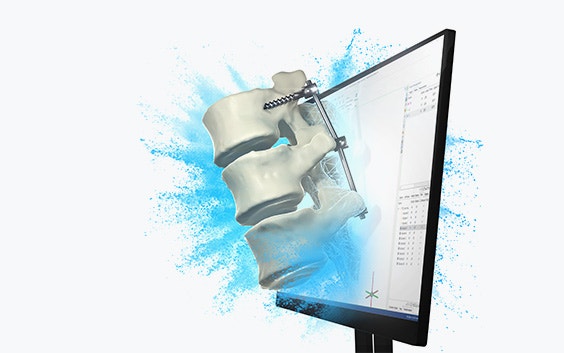EXPERT INSIGHT
Software: The Key to Engineering the Future of Personalized Care

Technologies such as 3D printing, extended reality, computational modeling, and artificial intelligence are increasingly leveraged to support medical treatment decisions, develop new medical devices, and better educate future biomedical engineers and healthcare professionals. According to Forbes1, 3D printing in healthcare alone has estimated revenues of over $3 billion annually, with strong future growth predicted. Software is an invaluable tool for supporting the application of these technologies. Let’s dive into three essential ways it enables progress in healthcare.
1. Enhancing research
Personalized engineering and simulation are critical for biomedical research teams, and medical image data is a robust basis for developing safer and more predictable patient outcomes. Software plays a crucial role here, making this advanced technology easy and rewarding for researchers to use. Materialise Mimics, for example, allows researchers and clinicians to complete studies across various research areas, including pre-clinical and clinical, and is cited in over 11,000 peer-reviewed papers. These areas of study include applications related to medical device design, 3D printing, computational modeling, AR/VR, and artificial intelligence.


2. Facilitating collaboration and knowledge transfer
Powerful solutions involve the work of many experts across various disciplines, so software that enables smooth collaboration accelerates innovations in the field. For example, the members of Griffith University’s ADaPT program create next-generation medical solutions, requiring efforts from engineers, clinicians, manufacturers, and more.
The Materialise University Site License for Mimics enables tool sharing across departments and research groups, allowing researchers from different disciplines to bring their unique perspectives and expertise to the table.
3. Educating the next generation of engineers and scientists
Software is also an essential tool to train and prepare students for a career in the medtech industry, specifically in the rapidly growing fields of bioengineering and biomedical engineering2. By using the same software as industry professionals, academic institutions can provide students with a valuable and marketable skillset. In fact, many leading hospitals and global medical device manufacturers, such as Enovis and Zimmer Biomet, utilize Materialise software in their business.
LUMC’s Dr. Bart Kaptein teaches a Computer-Aided Reconstructive Surgery course with Materialise software to give students experience with widely used tools. He says, “Having hands-on access to Mimics is…an opportunity to have them work with the industry-standard toolkit right from the beginning, making it easier for them to transition into the workforce.”
With Materialise’s University Site License, academic institutions can get affordable access to a full software toolbox that they can customize to fit their needs. Learn more about the license in this infographic.


Share on:
You might also like
Never miss a story like this. Get curated content delivered straight to your inbox.
